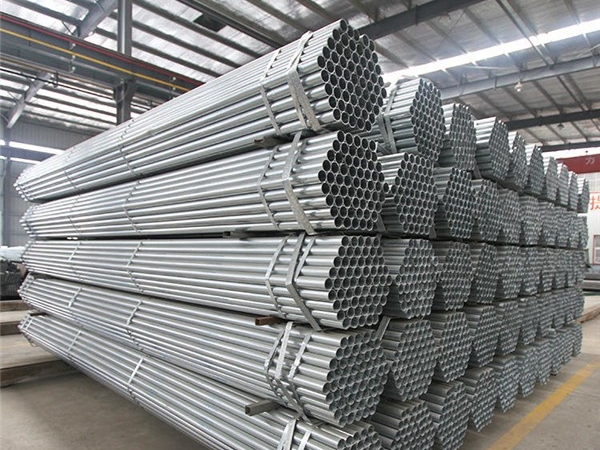Hot-Dip Galvanized Steel Pipe
Hot-dip galvanized steel pipes undergo a meticulous process starting with pickling on the steel components. This initial step aims to eliminate surface iron oxide. Following pickling, a thorough cleaning occurs using an aqueous solution of ammonium chloride, zinc chloride, or a blend of both. The treated steel components are then immersed in a hot-dip electroplating tank. This method offers advantages such as a uniform coating, robust adhesion, and an extended service life.
Cold-Dip Galvanized Steel Pipe
Though less commonly utilized on a large scale today, cold-dip galvanized steel pipes are introduced for the sake of differentiation. Also known as electro-galvanizing, this process involves the removal of oil and pickling using electrolysis equipment. The steel components are then immersed in a zinc salt solution, with a zinc plate connected to the positive electrode of the electrolysis unit. By applying an electric current, zinc is deposited onto the pipe fittings. Cold-dip galvanized fittings undergo initial processing before galvanization.

Differences Between Hot-Dip and Cold-Dip Galvanized Steel Pipes:
- Manufacturing Process:
Hot-dip galvanizing forms an alloy layer through the reaction of molten metal with the iron matrix.
Cold-dip galvanizing achieves its anti-corrosion properties through electrochemical principles.
- Production Equipment:
Hot-dip galvanizing involves pickling equipment and annealing furnaces.
Cold galvanizing requires electrolysis equipment.
- Performance:
Hot-dip galvanizing offers durable anti-corrosion with a thick, standard-quality coating.
Cold galvanizing exhibits excellent environmental performance, with a thinner but smooth coating.
- Thickness of Galvanized Layer:
Hot-dip galvanized layers are relatively thick (over 10um), providing excellent durability.
Cold-dip galvanized layers are very thin (3-5um), offering good processing performance but limited corrosion resistance.
- Applications:
Hot-dip galvanized steel pipes find applications in various fields due to their robust anti-corrosion properties.
Cold-dip galvanized steel pipes are considered a promising direction for environmentally friendly, heavy-duty anti-corrosion coatings.